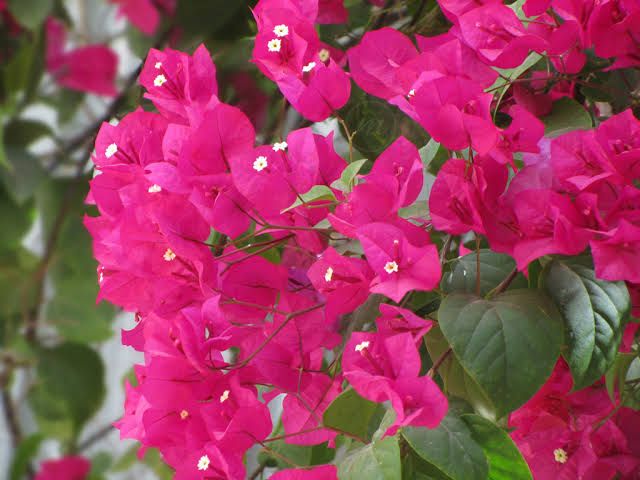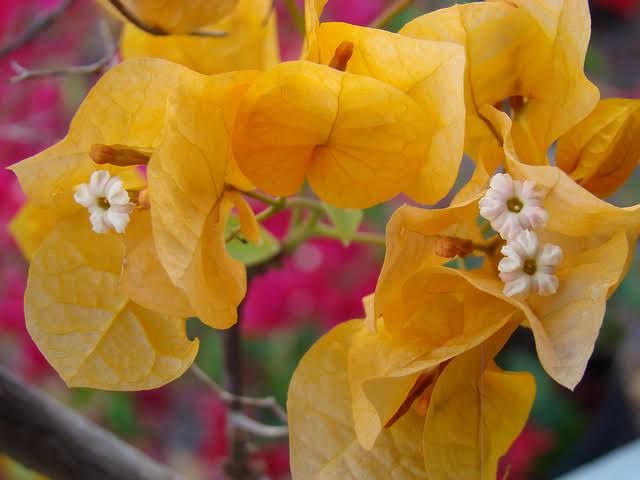
Bougainvillea is a flowering plant native to South America, named after French explorer Louis Antoine de Bougainville. The plant is known for its brightly colored, papery bracts that surround its small, inconspicuous flowers. The bracts, which are often mistaken for the plant's flowers, come in a variety of colors, including pink, red, purple, orange, and white, and can be either single or double.

Bougainvillea is a popular ornamental plant, commonly used in gardens, landscaping, and as a houseplant. It is known for its hardiness, drought tolerance, and ability to thrive in a wide range of climates. Bougainvillea plants can grow as either shrubs or vines, and are often trained to climb walls or trellises.
In addition to their ornamental value, bougainvillea plants have been used in traditional medicine for a variety of ailments, including respiratory infections, digestive issues, and skin conditions. However, it is important to note that the plant contains toxic compounds that can cause skin irritation and other health issues if ingested.